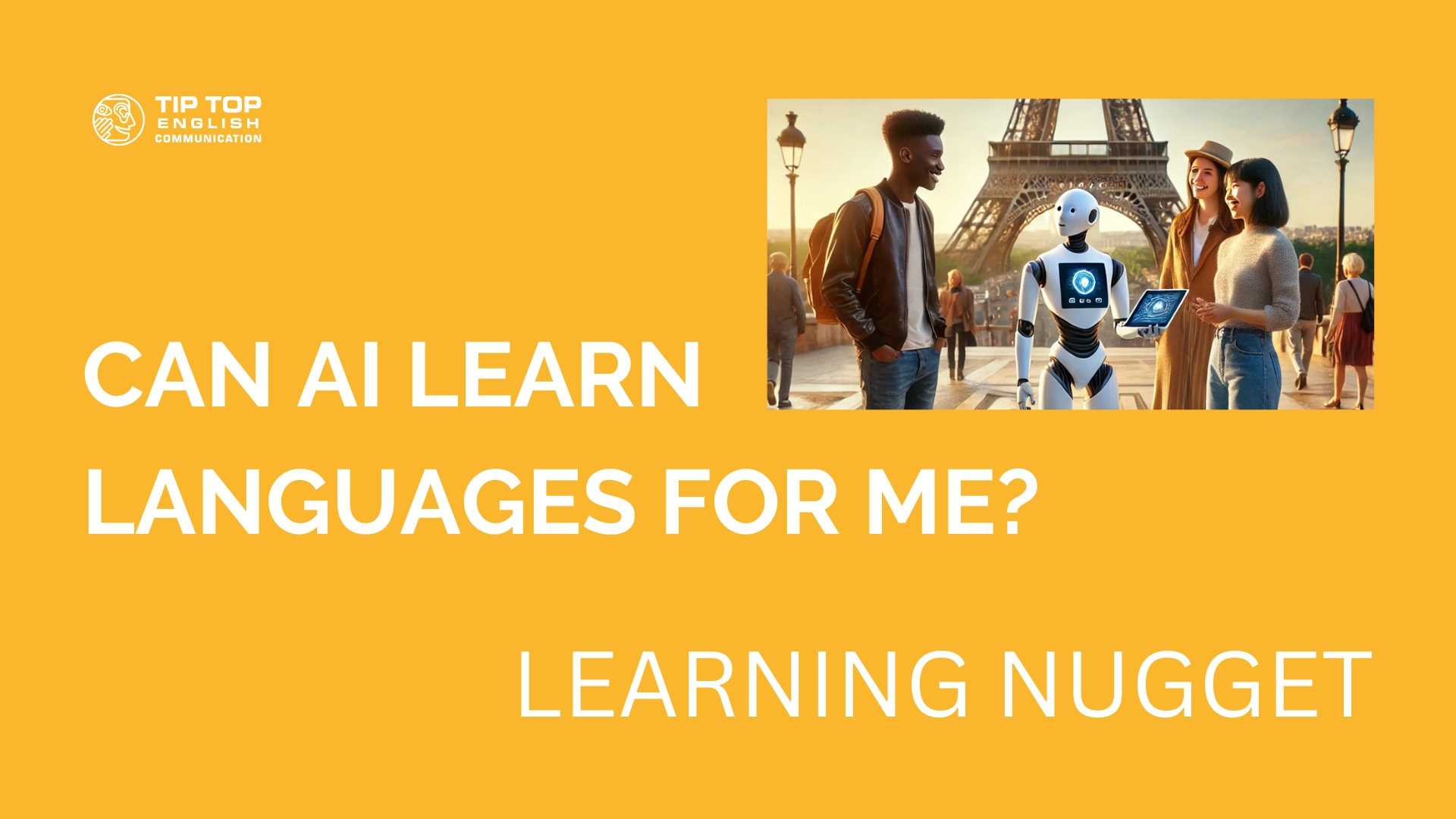Can AI learn languages for me?
From simplifying the experiences of tourists to assisting governments and businesses on international projects big and small, AI-powered language translation has transformed many aspects of the human experience. But has that change been entirely for the better? That’s a question we explore in this Learning Nugget.
A very brief history of digital translation
The first steps toward the types of digital translators we know today started in the 1950s when a small group of people began developing a field called machine translation (MT). The idea behind MT was to give machines bilingual dictionaries and grammar rules so they could translate short texts from one language to another. The translations were often awkward and hard to understand but showed enough potential to earn interest and investment from businesses and governments – especially from the U.S. and Soviet Union.
Eventually, new methods evolved that didn’t require feeding human-created rules and dictionaries to digital translation devices. They worked by analyzing large numbers of translated texts and calculating statistical probabilities of word order and use. When AI became a more accessible tool, statistics-based translation was supercharged and able to detect more nuance resulting in what’s called neural machine translation (NMT) Google Translate is the most popular tool powered mostly by NMT.
Another form of AI translation relies on Large Language Models (LLMs) AI translators using LLMs process huge numbers of texts (from social media posts to academic papers to novels) and are considered to be better at recognizing and expressing tone, idioms, and typical human speech patterns, ChatGPT is LLM-based.
A rule of thumb is that NMTs are the best choice for technical communications like manuals and legal documents that require precision whereas LLMs are more useful in creative and emotion-inspiring contexts like advertising or subtitle generation. Many services use aspects of both types of tools in hopes of combining their strengths.
A great resource to be used with caution
Even with the huge advancements made in recent years, we all know AI translation is far from perfect. One incident that captured international media attention occurred when a Palestinian working in the West Bank posted ‚Good morning‘ on Facebook and the site’s AI translated it as ‚hurt them‘ due to a slight misinterpretation The mistake was eventually realized, but Israeli police arrested the man based on the AI translation without first consulting any Arabic-speaking person.
Not all AI mistranslations have such extreme consequences, but the incident demonstrates many of the problems with blindly trusting this technology. And while we might accept these risks in a low-stakes situation like ordering lunch on vacation, AI translators are no replacement for truly understanding another language.
Mastering a new tongue involves not just memorizing vocabulary or grammar rules but also immersing oneself in a culture and way of thinking. It fosters patience, empathy, and a more nuanced understanding of others. While AI can bridge communication gaps, it can’t replace the personal growth that comes from learning a language yourself.
It’s summer time!
The Learning Nugget will be taking a little summer break in July – so we’ll see you again (maybe looking a little more tan) in August. No matter what your plans are for prime vacation season, we hope you have a great time and make wonderful memories!
Vocabulary
AI-powered – KI-gestützt
transformed – umgewandelt, verändert
explore – untersuchen, erforschen
digital translation – digitale Übersetzung
machine translation (MT) – maschinelle Übersetzung
bilingual dictionaries – zweisprachige Wörterbücher
investment – Investition
statistical probabilities – statistische Wahrscheinlichkeiten
supercharged – stark verbessert, verstärkt
nuance – feine Nuance, feiner Bedeutungsunterschied
neural machine translation (NMT) – neuronale maschinelle Übersetzung
Large Language Models (LLMs) – große Sprachmodelle
tone – Tonfall
speech patterns – Sprachmuster
LLM-based – basiert auf großen Sprachmodellen
rule of thumb – Faustregel
technical communications – technische Kommunikation
legal documents – juristische Dokumente
precision – Genauigkeit
emotion-inspiring – emotional ansprechend
advancements – Fortschritte
incident – Vorfall
captured international media attention – internationale Aufmerksamkeit erregt
misinterpretation – Fehlinterpretation
arrested – verhaftet
mistranslations – Fehlübersetzungen
blindly trusting – blindes Vertrauen
low-stakes situation – harmlose Situation
immersing oneself – eintauchen
patience – Geduld
empathy – Empathie
nuanced – differenziert
bridge communication gaps – Kommunikationslücken überbrücken
personal growth – persönliche Entwicklung
prime vacation season – Haupturlaubszeit
Excite Your Senses

On our YouTube channel, you can follow along as a native speaker reads this month’s Learning Nugget accompanied by music and pictures.
